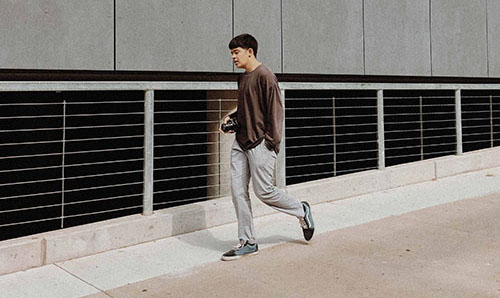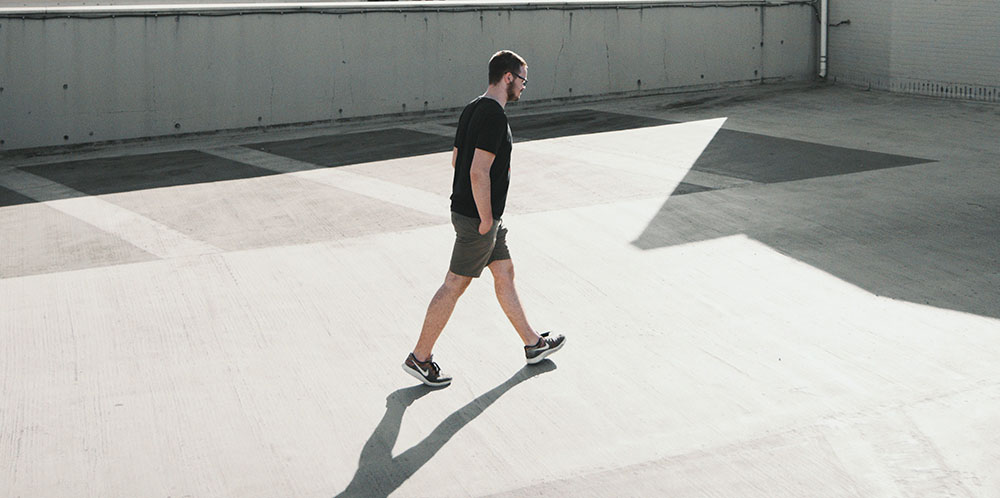If you're going for a lengthy walk, you'll want to make sure you're properly hydrated. Drink two glasses of water 30-60 minutes before your stroll to flush it out and stay hydrated throughout the day. When you arrive home from your walk, drink a glass of water to rehydrate your body. Electrolyte drinks and sugary sodas should be avoided.
Invest in the proper equipment: Replace your outdated flip-flops with a good pair of sneakers. This can help you maintain good posture when walking and may also lower your chance of injury. Furthermore, wearing the appropriate sneakers might help you enhance your stride and make walking longer distances more comfortable.
Concentrate on the form: Keep your chin up and your shoulders square. Your core should be engaged, and your back should be straight and comfortable. Most importantly, every step should work your glutes, and you should aim to tuck your butt inside.
Increase your pace: Interval walking is a terrific method to burn more calories and keep your stroll interesting. When walking, there are three various paces to choose from: stroll, brisk walk, and power walk. Warm up with a stroll, then go for the duration of your walk at a brisk pace, rising to a power walk pace every five minutes to elevate your heart rate.
Make a goal: In 30 minutes or an hour, how far can you walk? Aim for 1.5 miles per 30 minutes and 3 miles per hour, which is a brisk pace of roughly 20 minutes each mile, to optimise your walking pace. If you can't commit to an hour or 30 minutes of walking, do what you can.
Walk on an incline: If you're walking indoors, a treadmill allows you to adjust the inclination, which can help you burn more calories. If you're outside, try to walk in a hilly region to get the most out of your walk.
Taking a walk with a friend: To stay motivated and mix things up, find a buddy, family member, or coworker who will join you for a walk a few times a week.



